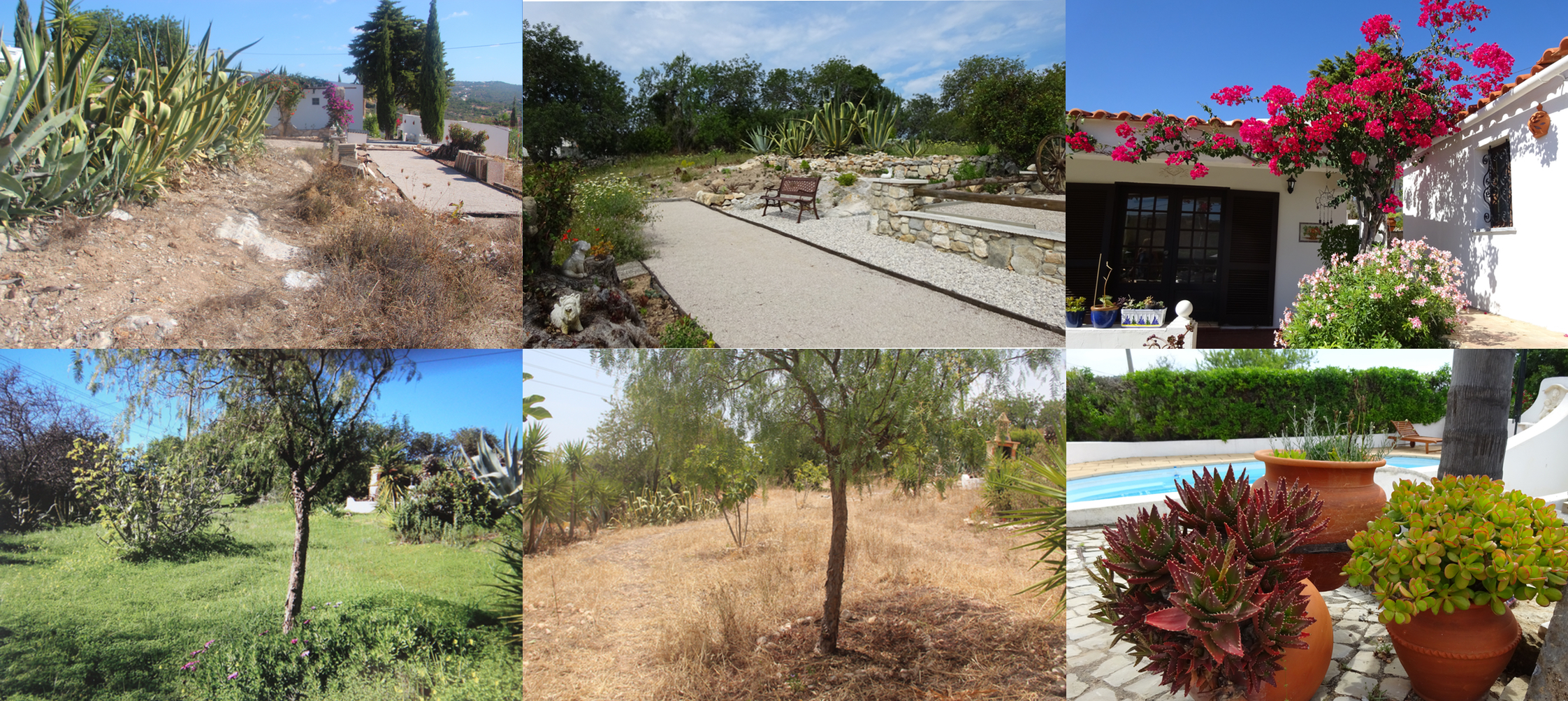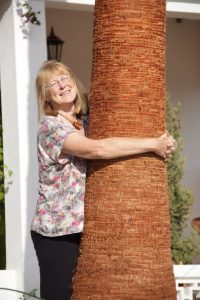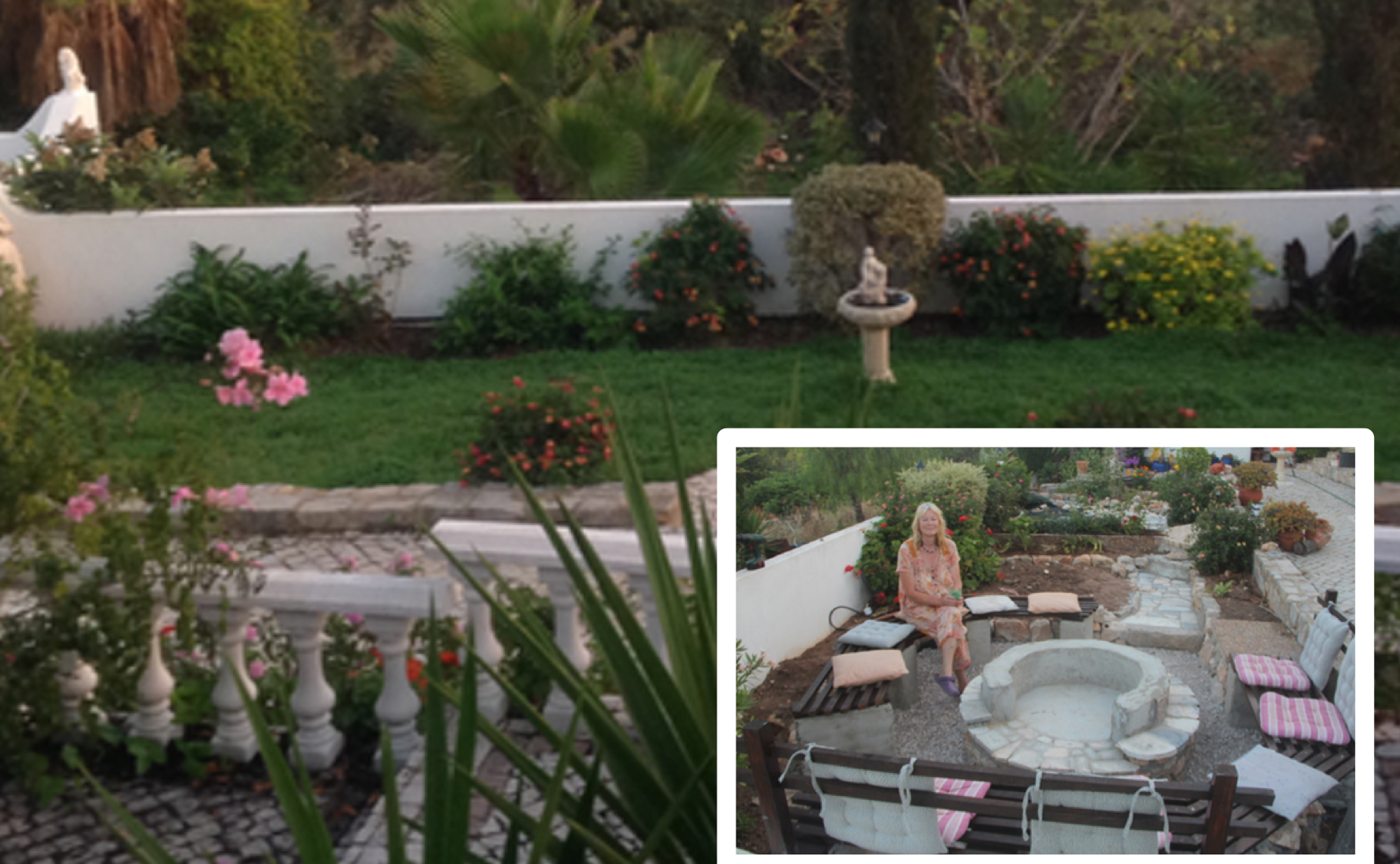After visiting the Algarve in 2013, Sundance and I loved it so much, that after extensive research, we decided to buy a holiday home. We now treat it more as our main home, spending more and more time here. If you have visited Portugal you may have noticed that ornamental gardening isn’t prevalent in the Algarve outside of the popular tourist spots. The reason is that in a country where starvation is still a living memory, to use water on flowers is almost tantamount to a crime. Any efforts to grow flowers are seen as a luxury and they are usually grown along walls with the use of washing up water or slops in an almost clandestine fashion.

June, July and August are very dry months especially in the Algarve, accompanied with the threat of devastating fires. In times of drought and hot temperatures, conserving water is a major consideration and therefore I’m learning all about gardening with less water.
With water conservation in mind, our lawn was dug up, irrigation removed and rocks taken from one area to be used in another. We  inherited an ornamental garden with palm and cypress trees, cobbled courtyards and countless statues along with a sizable uncultivated area. Like many property owners it wasn’t all to our taste and a great deal (of some areas) was covered with invasive overgrowth. Our first jobs were to tackle the awful vine cover, along with a lot of overgrown weeds and prune the huge trees on our border. Pruning the trees was very rewarding, as it opened up the most wonderful views from the house, down through the hills to the sea, some 10km away (apologies to UK readers for the use of km – it’s a Euro thing!).
inherited an ornamental garden with palm and cypress trees, cobbled courtyards and countless statues along with a sizable uncultivated area. Like many property owners it wasn’t all to our taste and a great deal (of some areas) was covered with invasive overgrowth. Our first jobs were to tackle the awful vine cover, along with a lot of overgrown weeds and prune the huge trees on our border. Pruning the trees was very rewarding, as it opened up the most wonderful views from the house, down through the hills to the sea, some 10km away (apologies to UK readers for the use of km – it’s a Euro thing!).
Taking a ’xeriscape’ approach (gardening without irrigation) took a bit more of a leap of faith. In September, on our return from our UK visit, many plants seemed withered and sad beyond hope, but with the first rains it was astonishing to see most revive quickly and an almost luminous green appear overnight. Those that didn’t survive, I rationalised, weren’t meant to be. Plants need the right setting to thrive and I decided sticking to mainly indigenous plants, which tend to be drought resistant, would be a sensible way to go. One day, hopefully, the end result will be something along the lines of a Mediterranean garden which keeps beauty and colour but with low maintenance and low water usage. The main characteristic of this style of garden is the focus on hardscaping: patios, courtyards, gazebos, paths and areas covered with stones.

This has largely been Sundance’s forte and he’s slaved away in many a midday sun to get raised beds built, fire-pit finished, petanque piste perfect, steps appearing here and there, meandering paths and terraces. Colourful stones, pebbles, rocks and trellis were used along with bits from a dilapidated cart and old knarled tree trunks.
There are many “pockets” of garden with dramatic differences. Some areas have such a thin coating of soil that we’ve been able to expose rock, whereas soils under trees tend to have rich, dark, crumbly soil. Other areas have the red clay soil that dries like a brick for half the year. We’ve tried to utilize these differences along with varied conditions of light and level. The softscape comes from the choice of plants, shrubs and trees. It was great to inherit some well-established trees: almond, carob, loquat and olive where no watering is needed and fruits abound in season. An added bonus is fabulous almond blossoms in January and our three pomegranate trees have been stunning throughout the year with red flowers, lovely young red leaves in spring followed by very attractive fruits and yellowing leaves in winter. We also have citrus trees, which have the most fabulous juicy fruit and the blossom scent is exquisite. These have needed more water and care, but we’ve been well rewarded. An interesting feature is that you can find blossom, tiny green fruit and mature oranges all on the same tree at the same time. As for lemons, there is a steady supply all year round and even surplus for the occasional visitor from our home village of Barton to smuggle back into the UK to pep up their G&T’s!
ALGARVE LEARNING POINTS
- Oleanders – large, colourful, grow in poor soil.
- Passion Flowers and heavily scented Jasmine can climb anything.
- Local grasses are hardy, drought resistant and are stunning.
- Huge variety of cacti, euphorbia and succulents which require no watering and blooms are dramatically colourful, if short lived.
- Rosemary, lavender, thyme and artemis bushes, hibiscus and lantana flow effortlessly adding colour and scents.
- Portuguese varieties of rose bushes need little water.
- Bougainvillea come in many colours and are stunningly beautiful, but petals need sweeping just about every day of the year!
- Herbs thrive too and there is nothing quite like picking fresh produce from the garden for your cooking.
- Pots filled with evergreen plants or herbs – easy to water by hand – provide interest.
- Have an anti-mosquito plant or two – lavender, lemon geranium near the outdoor dining area – keep pests at bay and also have heavenly scents.
- Invasive plant species – usually non-indigenous, damaging and hard to get rid of!
Enjoy our blogs? To receive updates and new posts, subscribe now by entering email in “Subscribe Here” box on the right. We do not pass on addresses to other parties.

